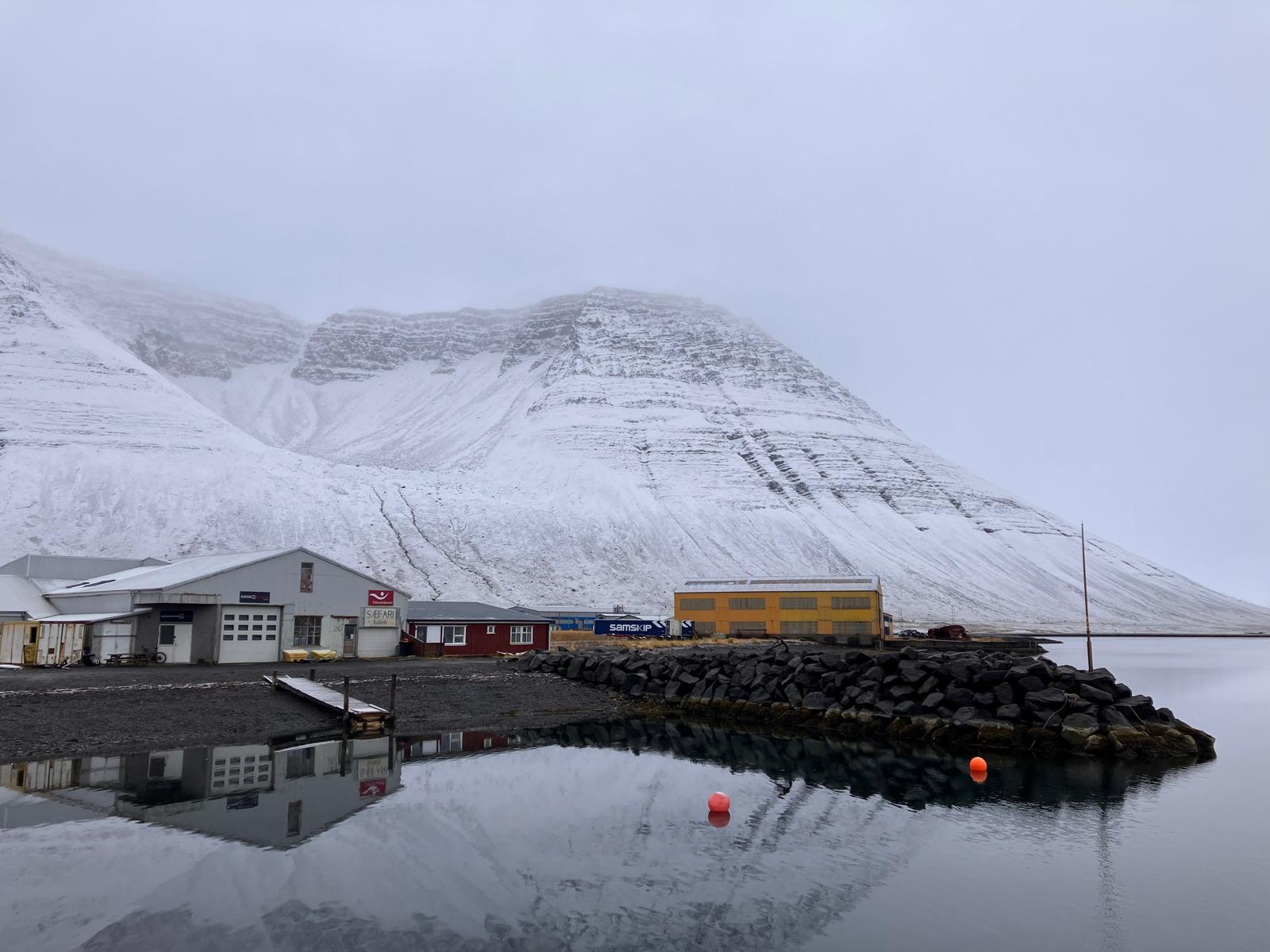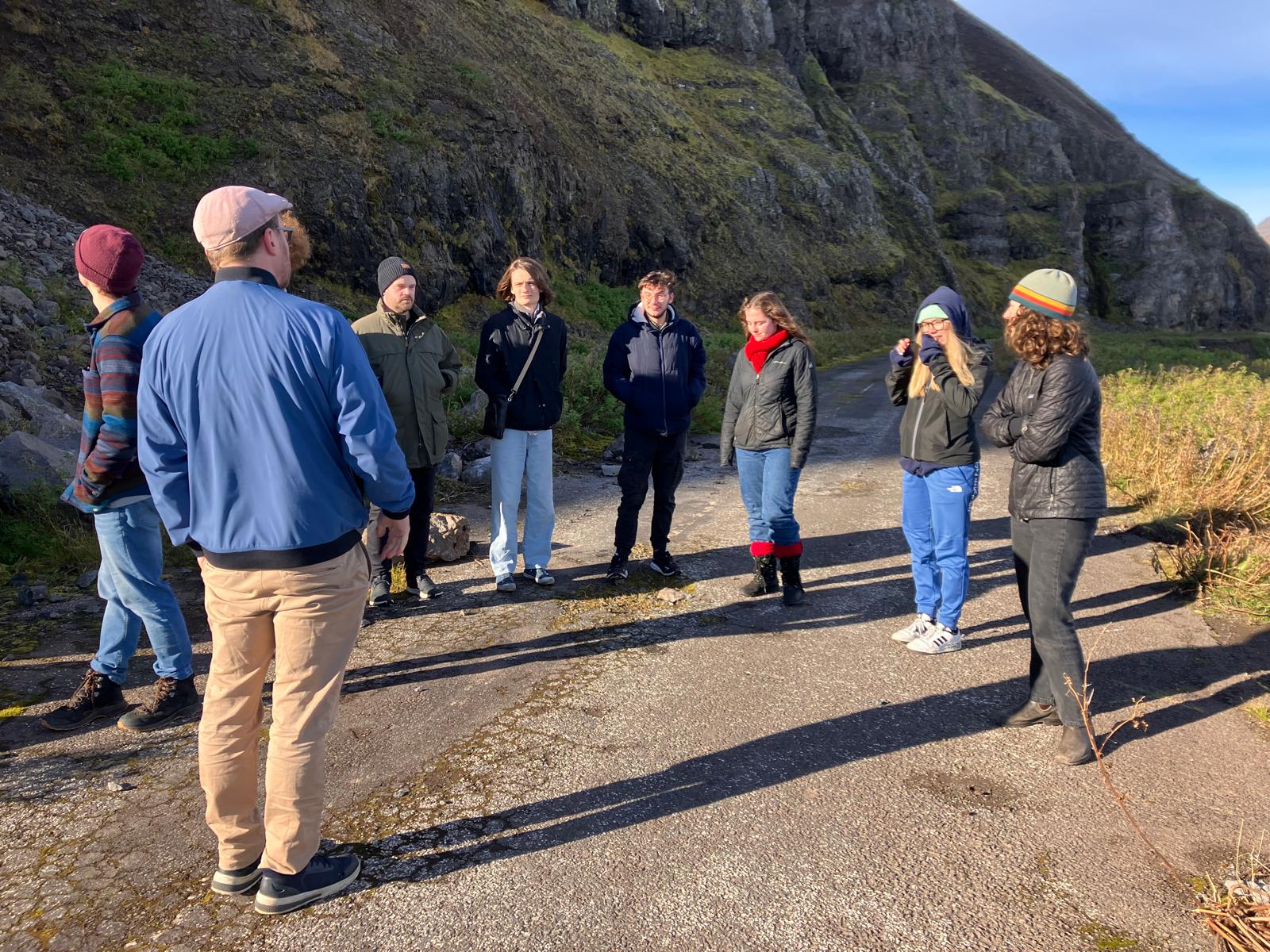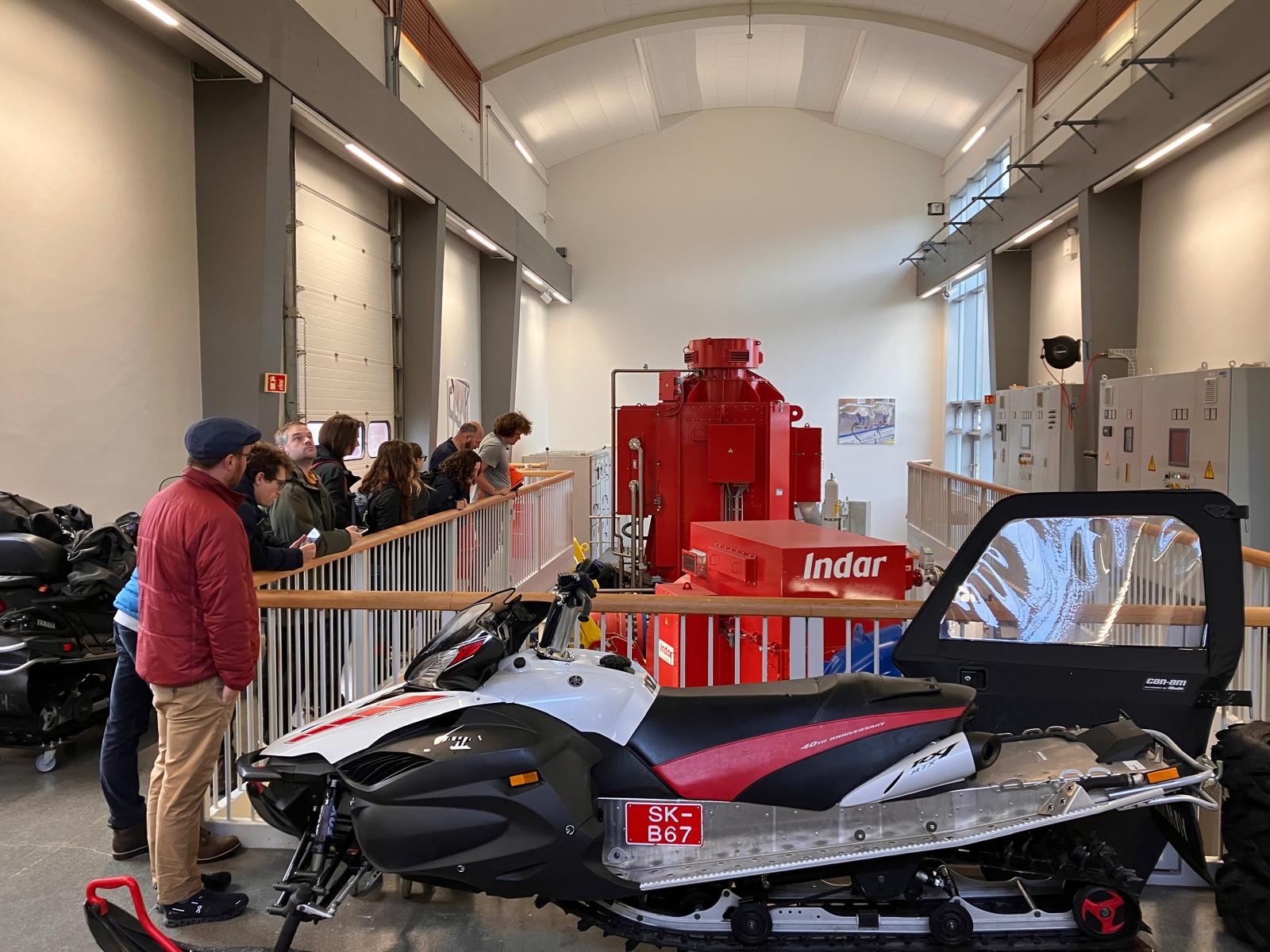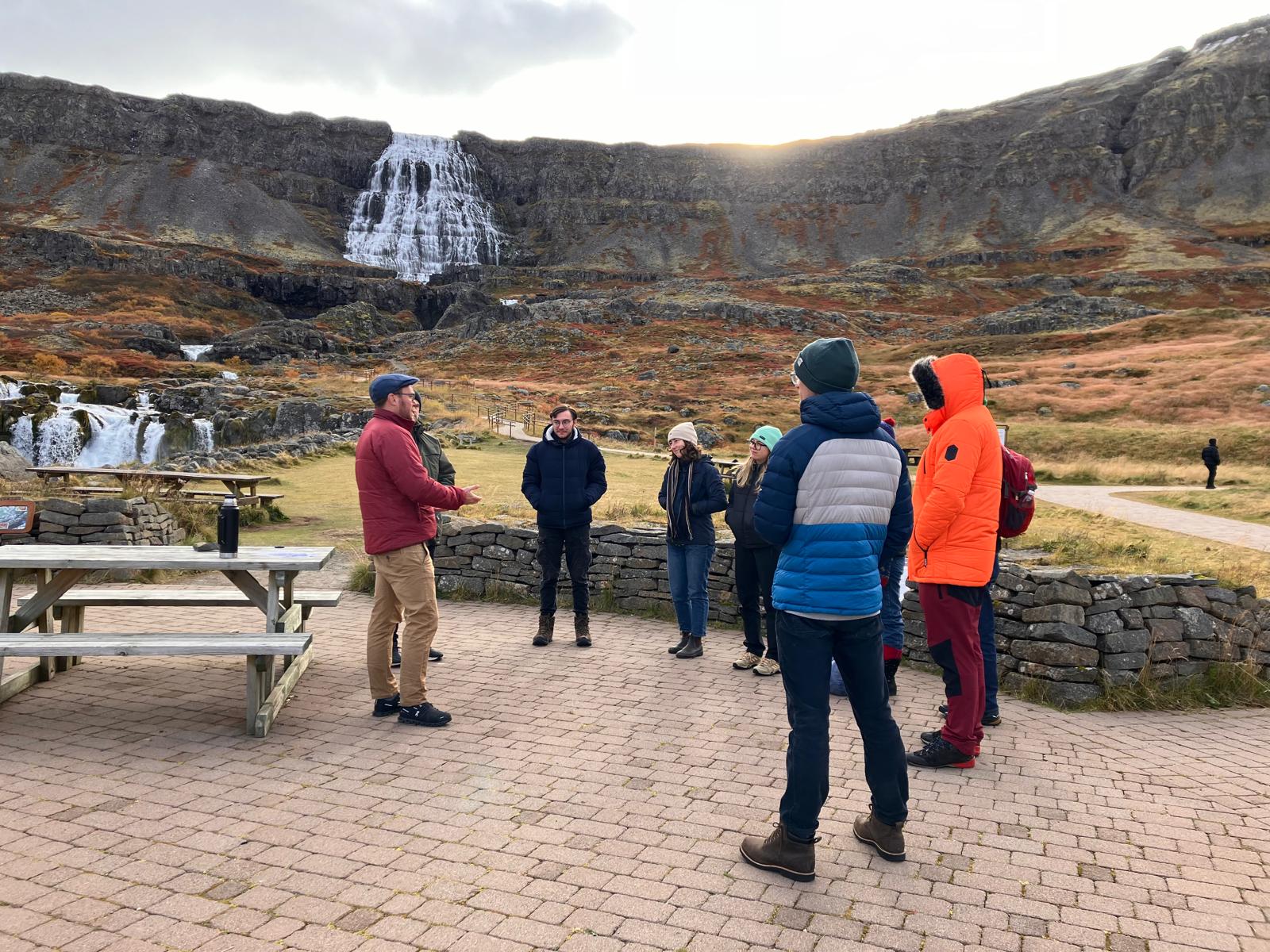Master's Students Explore Coastal Development and Climate Challenges in the Westfjords
Master's students from the Coastal Communities and Regional Development program recently participated in a series of field trips as part of the "People and the Sea: Geographical Perspectives" course. Over three weeks, the students explored Ísafjörður and nearby communities, learning about the historical development of the region, the socio-economic and environmental challenges faced by its inhabitants, and the ongoing efforts to adapt to climate change. The field trips provided insights into how the Westfjords are balancing new economic opportunities like tourism and aquaculture with the need for sustainable infrastructure and environmental protection.
During the first week of the course, students were introduced to the town of Ísafjörður, getting insights into the historical development of the settlement and its present day challenges. Discussions evolved around the “boom” that commercial fisheries brought to Isafjordur at the beginning of the last century, which was followed by a period of decline and increased socio-economic, transport, and natural hazards challenges. Today, tourism and aquaculture brought new economic opportunities, while infrastructure projects improved protection against natural hazards – particularly avalanches – and provided a better connection to the rest of Iceland. However, challenges still persist: additional improvements in transport infrastructure are needed, the housing market has been disrupted by increased tourist demand, and tourist and industrial activities are having a negative ecological impact.


During the second week of the course, students went on a field trip to mountain Bolafjall in Bolungarvík, and to the town of Flateyri, taking advantage of some glorious weather. These locations are living examples of the increasing natural hazard risks associated with climate change, and how communities adapt to them. A case in point is the former coastal road connecting Hnífsdalur to Bolungarvík, repeatedly destroyed by landslides, and now replaced by a tunnel. Another one is the extensive barrier and mounds systems built in Bolungarvík, Ísafjörður, Flateyri and in other towns in the Westfjords to protect homes and road infrastructure from avalanches. And perhaps a less visible one is the diesel power generators that take over energy production when the regional energy grid is down during extreme weather events.


In the third and final week of the course, students went to Mjólkávirkjun hydropower plant, and learnt about the history of the project, its day-to-day operations, as well as current and future development plans for the energy grid in the Westfjords. Taking advantage of another day with unusually good weather, our group went to Dynjandi waterfall – one of Westfjord´s top tourist hotspots. It was interesting for the students to think about the fact that less than a century ago, people were considering using the waterfall for hydropower.


On the last day of the course, the students presented their posters during the “Islands as diverse spaces” conference held at the University Centre on October 4th. The posters showcased unique islands from all over the world and made use of systems thinking tools to explain some of the puzzling development dynamics in each location. From North Sentinel Island where tribes still live in isolation from mainland India, to the immense crowds of tourists on Jeju Island off Korea, it´s needless to say the posters led to highly engaging and insightful discussions between students and conference participants.


